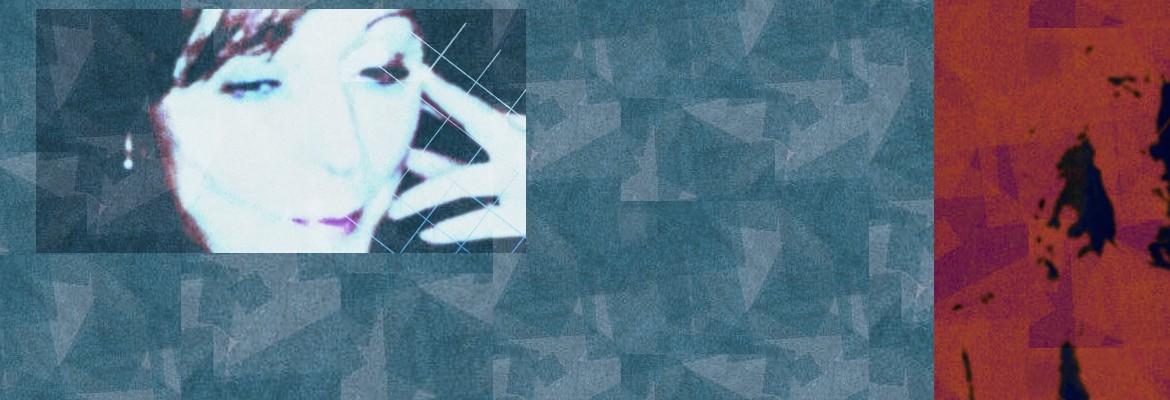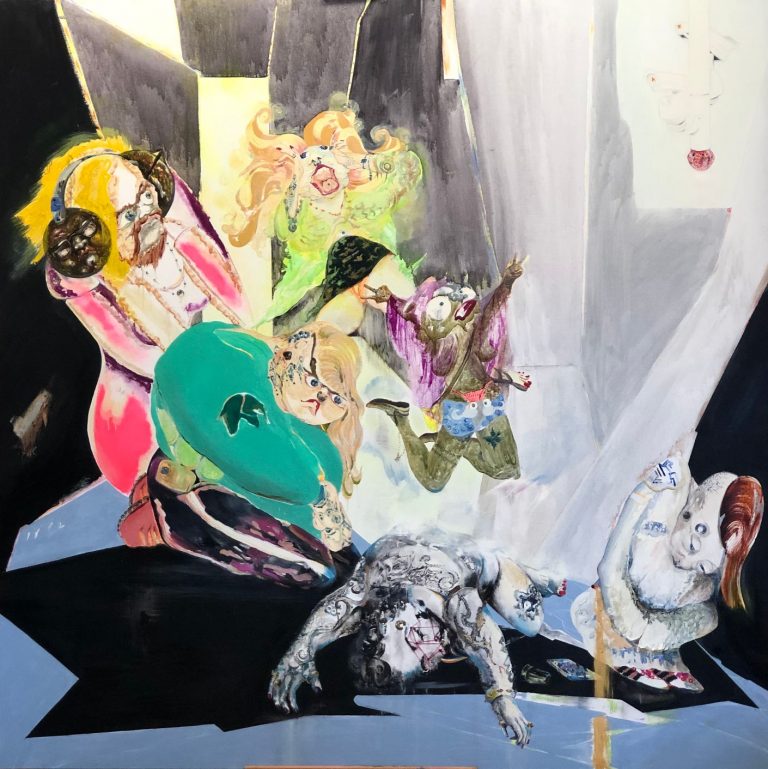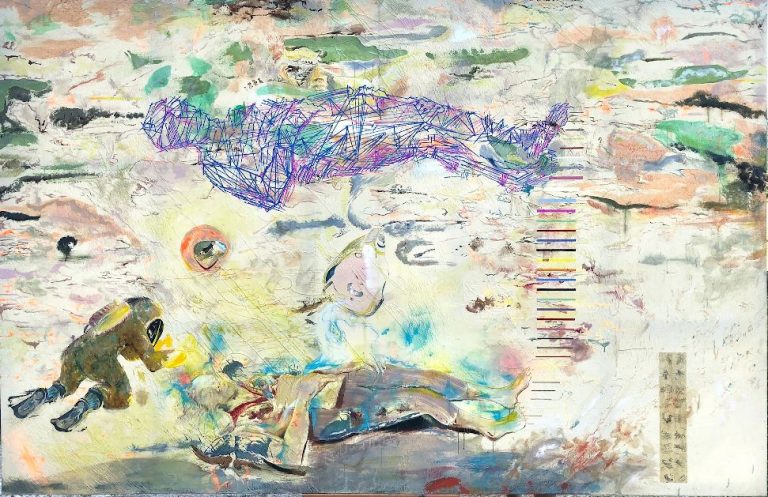La obra pictórica de Juan Casbas remite a la contemporaneidad de las imágenes sintéticas que formatean las mentes de las generaciones más jóvenes y que son creadas a partir de las matemáticas y la informática. El artista destaca por su formación artístico-intelectual con la que aborda esta temática. De hecho, no deja de ser una elección original y definitoria de su manera de entender el arte, que trate ese tipo de imágenes CGI (call them synthetic) a base de pinceles, papeles y óleos. En esa línea, ejercita su creatividad a través de una práctica-artesanal a la que imprime un sello propio y original. Su intención es arrojar luz sobre la iconicidad y la ficcionalidad de la realidad que anida en un imaginario social constrictivo, alimentado visualmente por imágenes computerizadas que contienen un alto grado de figuración y refetichizacion fantástica.
En este contexto, el artista retoma todo cuánto hay de verosímil y de fantasía en aquellas imágenes que han sido configuradas mediante algoritmos y medios digitales. Su posición no es tanto crítica como declarativa, al igual que lo fueron en su momento los fotomontajes de Raoul Hausmann. Puede decirse que el pintor intenta crear una nueva unidad partiendo de las imágenes sintéticas que circulan en un mundo globalizado e inmerso en la lógica del neoliberalismo y el aceleracionismo de la Cuarta Revolución Industrial. Es más, del mismo modo que hicieron los impresionistas (Manet, Renoir, Pissarro) que aprovecharon las posibilidades de la fotografía para su pintura de paisajes y retrato, a fin de analizar al detalle las variaciones de la luz, el artista utiliza las imágenes sintéticas que proliferan, tanto en los medios de comunicación, en la alta y baja cultura asi como en las imágenes de publicitación privadas y estatales biopoliticas, a fin de reflexionar y afrontar un mundo posthumano que nos viene dado sin aparentemente ninguna otra opción.
Tras este fondo conceptual reúne las diversas posibilidades configurativas que coexisten simultáneamente en la actualidad. Sus piezas se distribuyen en variados tamaños entre los que destaca el formato horizontal de grandes dimensiones, simulando los fotogramas de los films de ficción futurista. En la composición visual de sus creaciones predomina la fuerza expresiva del color y el simbolismo de los detalles situados en los márgenes del cuadro que han sido realizados puntualmente con gran destreza hiperrealista.
Ante la constatación de un futuro re-diseñado abrumadoramente por el arte digital o sintético, el artista ofrece la posibilidad de atender a un tiempo que está por venir, que no ha de ser necesariamente apocalíptico y en donde la fantasía y el ingenio, facultades propiamente humanas, reconstruyan de nuevo el sentido de una vida en común en contacto con la naturaleza. Con todo, la obra de Juan Casbas no busca una visión retrotópica ni nostálgica de la realidad sino que es más bien un testimonio pictórico del momento histórico en el que vivimos y en el que cada vez se hace más preciso recordar la procedencia antropológica de nuestra “humanitas” y el fundamento cultural de nuestra filogénesis.
IMAGES OF A WORLD – JUAN CASBAS –
The pictorial work of Juan Casbas refers to the contemporaneity of the synthetic images that format the minds of the younger generations and that are created from mathematics and computer science. The artist stands out for his artistic-intellectual training with which he approaches this subject. In fact, it is still an original and defining choice of his way of understanding art, dealing with this type of CGI images based on brushes, paper and oils. Along these lines, he exercises his creativity through a craft-practice on which he imprints his own original stamp. Its intention is to shed light on the iconicity and fictionality of reality that nests in a constrictive social imaginary, visually fed by computerized images that contain a high degree of fantastic figuration and refetishization.
In this context, the artist takes up everything that is plausible and fantasy in those images that have been configured by means of algorithms and digital media. His position is not so much critical as declarative, just as Raoul Hausmann’s photomontages were at the time. It can be said that the painter tries to create a new unity starting from the synthetic images that circulate in a globalized world immersed in the logic of neoliberalism and the accelerationism of the Fourth Industrial Revolution. Moreover, in the same way that the Impressionists (Manet, Renoir, Pissarro) did, who took advantage of the possibilities of photography for their landscape and portrait painting, in order to analyze in detail the variations of light, the artist uses synthetic images that proliferate, in the media, in the high and low culture, in private commercial advertising as well as biopolitical state images, in order to reflect and face a post-human world that is given to us without apparently any other option.
Behind this conceptual background, brings together the various configurative possibilities that coexist simultaneously today. His pieces are distributed in various sizes, among which the large horizontal format stands out, simulating the frames of futuristic fiction films. In the visual composition of his creations, the expressive force of color and the symbolism of the details located in the margins of the painting predominate, which have been made, occasionaly, with great hyper-realistic skill.
Faced with the verification of a future overwhelmingly re-designed by digital or synthetic art, the artist offers the possibility of attending to a time that is yet to come, which does not necessarily have to be apocalyptic and where fantasy and ingenuity, properly human faculties, once again reconstruct the meaning of a life in common in contact with nature. However, the work of Juan Casbas does not seek a retrotopian or nostalgic vision of reality but rather a pictorial testimony of the historical moment in which we live and in which it is becoming more and more precise to remember the anthropological origin of our “ humanitas” and the cultural foundation of our phylogenesis.






